Search
Did you mean: Gades?
Remove Ads
Advertisement
Summary 
Loading AI-generated summary based on World History Encyclopedia articles ...
Search Results

Definition
The Graces
The Graces (also Charites, sing. Charis) were goddesses from Greek mythology who personified charm, grace, and beauty. Hesiod describes three Graces, and this is their most common grouping in literature and art, but their number varies depending...
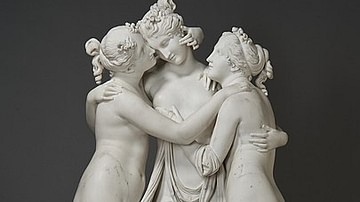
Image
The Three Graces by Antonio Canova
The Three Graces, statue by Italian sculptor Antonio Canova, commissioned at the behest of Empress Joséphine de Beauharnais, c. 1813-1816.
Hermitage Museum, St. Petersburg.
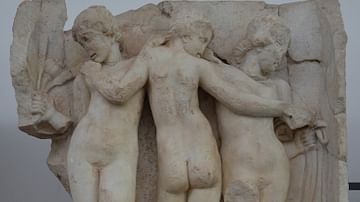
Image
Relief with the Three Graces
Relief from the Sebasteion of Aphrodisias depicting the Three Graces in a typical Hellenistic style. The Sebasteion is a monumental complex dedicated to Aphrodite and the Julio-Claudian emperors in the 1st century CE. Aphrodisias Museum...
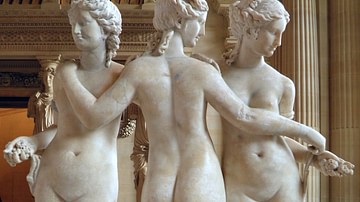
Image
The Three Graces, Louvre
Marble statue of the Three Graces dancing in a circle. 2nd century CE Roman copy of a Greek statue of the 2nd century BCE with Rennaisance era restorations. Found in the Villa Cornovaglia in Rome. Louvre Museum, Paris.

Image
Three Graces Relief, Piraeus
A marble relief plaque showing the Three Graces. Copy of a c. 470 BCE original by Sokrates the Boetian sculptor. (Archaeological Museum, Piraeus)
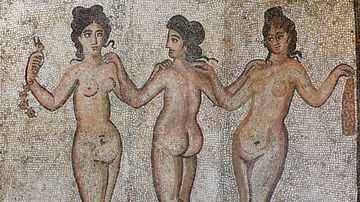
Image
Mosaic of the Three Graces
Mosaic of the Three Graces from Caesarea in Mauretania (modern-day Cherchell in Algeria). Dated to the 4th century CE.
Archaeological Museum of Cherchell, Algeria.

Definition
Horae
The Horae (Horai, sing. Hora) were the personification and goddesses of the seasons and the hours and, later on, were regarded as goddesses of order and justice in Greek mythology. They were the daughters of Zeus and the Titaness Themis and...
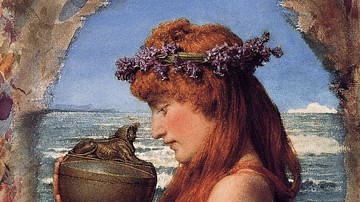
Definition
Pandora
Pandora is a figure from Greek mythology who was not only the first woman, but —as an instrument of the wrath of Zeus— was held responsible for releasing the ills of humanity into the world. Pandora was also an unrelated earth goddess in...
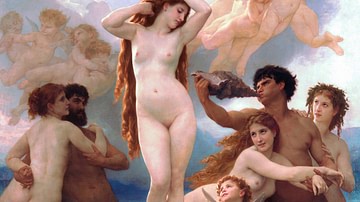
Definition
Greek Mythology
Greek mythology was used as a means to explain the environment in which humankind lived, the natural phenomena they witnessed and the passing of time through the days, months, and seasons. Greek myths were also intricately connected to religion...
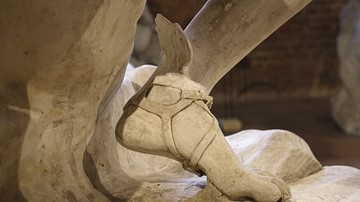
Definition
Hermes - The Messenger of the Olympian Gods
Hermes was the ancient Greek god of trade, wealth, luck, fertility, animal husbandry, sleep, language, thieves, and travel. One of the cleverest and most mischievous of the 12 Olympian gods, Hermes was their herald and messenger. In that...